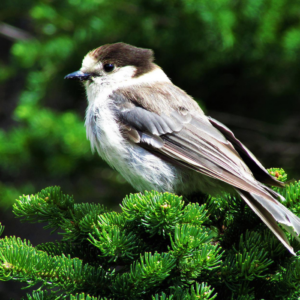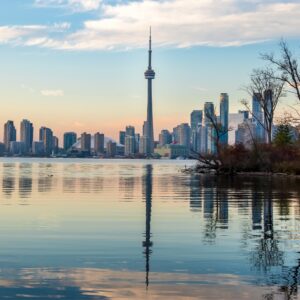Women for Nature Explore the Local to the Global

Jaime Clifton-Ross
This blog is written by Jaime Clifton-Ross, Research Curator, CRC Research and Changing the Conversation, School of Environment and Sustainability, Royal Roads University.
Like climate change, biodiversity does not respect political borders, given the lengthy migratory paths that many species journey, either by land or water. Protecting wildlife and conserving ecosystems is especially challenging as such efforts require global governance systems. To unpack these issues and to explore potential solutions, Changing the Conversation hosted the second e-dialogue from our 4-part series, Biodiversity Conversations: How important are the common loon and polar bears to Canadians. Led by Women for Nature and moderated by co-chair Ann Dale, the panelists brought expertise in soil biodiversity, marine mammals, climate change, conservation, and monarch butterflies. Overall, it was a thought-provoking discussion given the invaluable knowledge and experience of our expert panelists.
 The e-conversation used the Monarch Butterfly and their migratory cycle to illuminate how many species are highly dependent on both local and global ecosystems. We learned that biodiversity loss often begins at a local scale— whether through habitat loss and fragmentation, resource extraction or exploitation, invasive species, etc.—and often becomes a problem of global proportion, which in turn feeds back into the local. They also discussed how many conservation strategies and official plans do not account for species migration. Like marine protected areas, landscape corridors are also critical since many species spend much of their lives away from their breeding and feeding grounds. As local biodiversity loss reflects global biodiversity loss, action at the local level can make a huge impact. Unfortunately, many global actions have not been effective, including the Convention on Biological Diversity, because they have failed to make this connection.
The e-conversation used the Monarch Butterfly and their migratory cycle to illuminate how many species are highly dependent on both local and global ecosystems. We learned that biodiversity loss often begins at a local scale— whether through habitat loss and fragmentation, resource extraction or exploitation, invasive species, etc.—and often becomes a problem of global proportion, which in turn feeds back into the local. They also discussed how many conservation strategies and official plans do not account for species migration. Like marine protected areas, landscape corridors are also critical since many species spend much of their lives away from their breeding and feeding grounds. As local biodiversity loss reflects global biodiversity loss, action at the local level can make a huge impact. Unfortunately, many global actions have not been effective, including the Convention on Biological Diversity, because they have failed to make this connection.
After agreeing that conservation must simultaneously occur at multiple scales, the panelists explored the need to break-down political boundaries and to augment cross-border cooperation and collaboration. They also shared many examples of existing initiatives and organizations throughout North America.
A concluding consensus was that we need to creatively engage people with nature, especially at a young age. This may personalize experiences with biodiversity loss and subsequently help consumers better understand their individual and collective impacts on their environment.
To view the full conversation, download a PDF copy here which includes many sources highlighted during the conversation. You can also download a PDF copy here. To dive deeper on the subject, check out our curated biodiversity library featuring a collection of resources on our Changing the Conversation platform.
Our next conversation will take place at the end of January 2018 and will focus on the drivers and barriers of biodiversity conservation. Upon completing the series, we will be transforming our dialogue into action, drafting a biodiversity conservation action agenda to circulate to Canadian decision-makers across the country. So, stay tuned.



